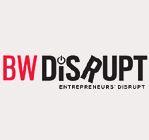India in 2050: Future of Food

Jan 19 2017
Food wars triggered by scarcity and price of food are likely by 2050 unless we change how food is produced, processed, and supplied
Most major wars fought in the last two centuries have been focused on control of precious resources like minerals, oil, and land. This picture has started to shift in the past few years, with armed conflict increasingly focused on control over depleting water resources and by association food. Climate change-linked droughts in Northern Africa and Sahel, and the resulting shortage of food is one of the triggers behind the European refugee crisis. As these populations relocate to other areas, competition for scarce resources intensifies and results in conflict against the “others” – as we have seen in Western Europe. This is by no means an isolated trend, but the beginning of a pattern we can expect to see in India as well. By 2050, the India’s population will reach 1.7 billion people, creating the most populated country in the world. Food demand will increase by 70%, and is already lagging domestic food production.
Growing prosperity coupled with changes in food patterns will mean that much of this demand will be for water intensive food commodities such as meat. Output of animal products has already overtaken cereals, and accounts for one-third of all agricultural output. Eventually we will reach a tipping point when the demand for meat can no longer be met without shifting agricultural land towards cultivation for cattle, or importing meat. Unfortunately, growing prosperity will walk hand-in-hand with growing inequity – leaving those who live on less than $5 a day unable to afford high-protein diets with requisite micronutrients. If agriculture and food production continues its “business as usual trajectory”, low income and vulnerable communities will likely only be able to access carbohydrates as staple foods. We are already seeing the impact of carbohydrate-rich foods on these communities in terms of higher prevalence of chronic diseases such as diabetes and hypertension. As diets worsen the prevalence of these diseases will continue to increase, resulting in a vicious cycle which wipes out economic prosperity gains because of increased healthcare expenditure, and in-turn curtails spend on healthier food options. Solutions of the past decade such as high quality inputs and farm mechanization will start to prove insufficient in our quest to feed more and more people healthy diets at affordable prices.
Disruption is imminent in the next decade across value chains and commodities; the future is likely to be one of abundance rather than scarcity
So does this mean the future is bleak? We think not. Human history is a story of triumphs of ingenuity in how food is grown, processed, and distributed. From shifting cultivation, to fixed and specialized farming, to the industrial revolution, and finally the green revolution in India – every few generations we see a leap in technologies that pivot eras of scarcity into eras of abundance. The next pivot is coming, and it is unlike anything we have ever seen before. As exponential technologies such as IoT, machine learning, and robotics commercialize and converge; we will see fundamental shifts in terms of where food is grown, what food is grown, who grows it, and what we expect from it.
View full article



